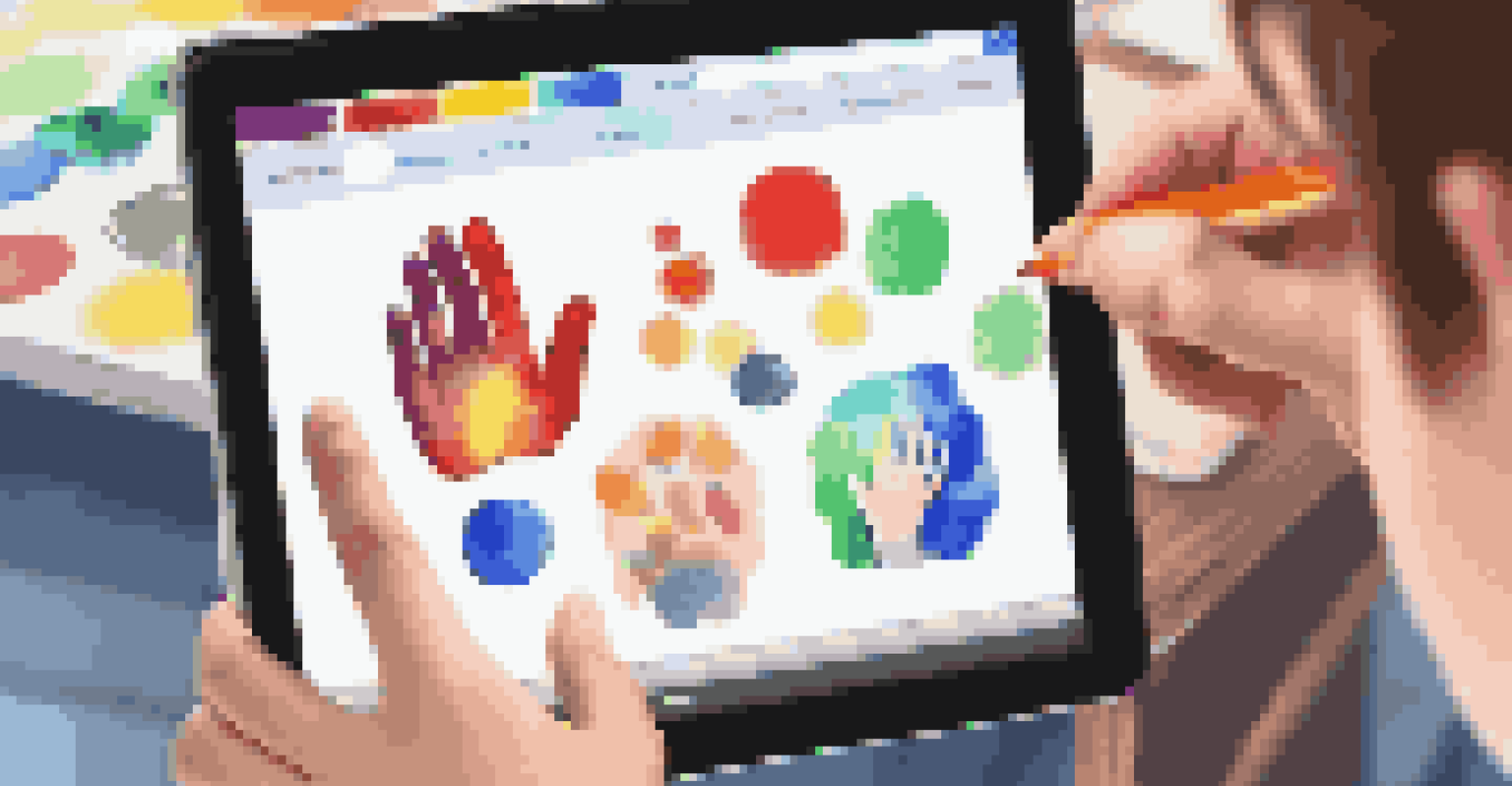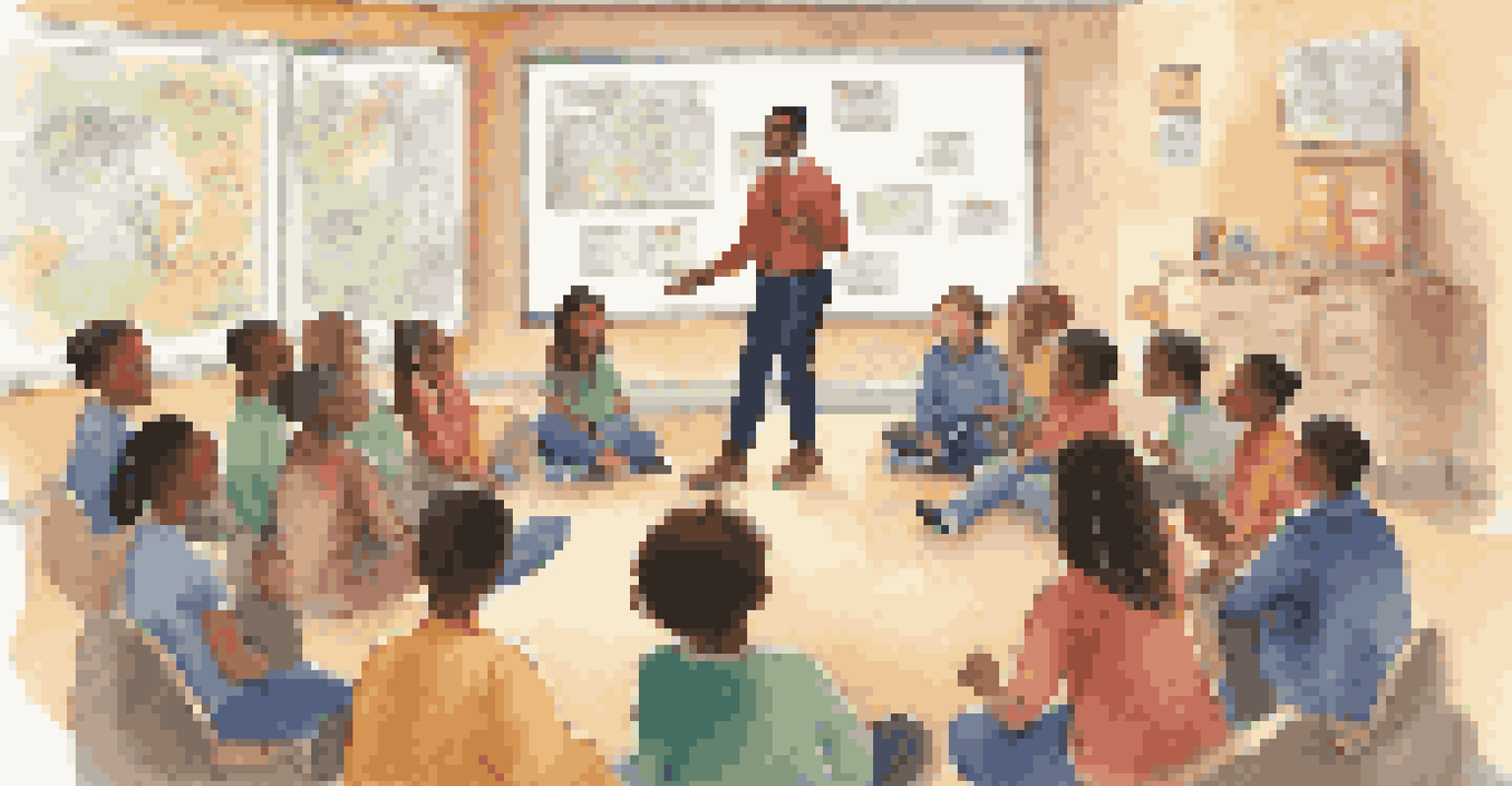Tailoring Learning Experiences for Diverse Learners in Blended

Understanding the Diverse Needs of Learners
Every learner brings a unique set of experiences, backgrounds, and learning styles to the educational table. This diversity can be seen in age, culture, prior knowledge, and even preferred ways of learning. Recognizing these differences is the first step toward crafting a learning environment that resonates with everyone.
The greatest sign of success for a teacher is to be able to say, 'The children are now working as if I did not exist.'
For instance, some students may thrive in social settings, while others excel when learning independently. By understanding these variances, educators can create a blend of activities that cater to both types of learners. This means designing lessons that incorporate group discussions alongside solitary study time.
Ultimately, acknowledging and embracing diversity helps in creating a more inclusive atmosphere, making each learner feel valued and understood. This foundation is crucial for successful blended learning experiences.
The Role of Technology in Personalizing Learning
Technology plays a pivotal role in tailoring learning experiences, especially in blended environments. With tools like learning management systems and educational apps, educators can offer personalized resources and assignments based on individual learner needs. This flexibility allows students to progress at their own pace, ensuring that no one is left behind.

For example, a student struggling with math may benefit from interactive tutorials that adapt to their skill level. These tools provide instant feedback and allow for repeated practice, catering to different learning paces. By harnessing technology, teachers can ensure that the material is accessible and relevant for all students.
Embrace Learner Diversity
Recognizing the unique experiences and learning styles of each student is essential for creating an inclusive educational environment.
However, it’s essential to balance technology use with traditional methods. While tech can enhance learning, personal interactions and hands-on experiences remain equally important in building strong learner connections.
Creating Inclusive Learning Environments
An inclusive learning environment welcomes all students, regardless of their backgrounds or abilities. This means providing varied resources and opportunities that cater to diverse learning needs. By fostering an atmosphere of respect and acceptance, educators can encourage collaboration and peer support among students.
Education is not the filling of a pail, but the lighting of a fire.
For instance, consider using varied instructional strategies, such as visual aids, hands-on activities, and collaborative projects. This approach not only engages different types of learners but also promotes a sense of community. When students see their peers participating in various ways, they feel more empowered to express themselves.
Inclusion goes beyond physical space; it encompasses emotional and psychological safety as well. Creating an environment where students can share their thoughts without fear of judgment is vital for fostering a love of learning.
Implementing Differentiated Instruction
Differentiated instruction is a teaching approach that adjusts content, process, and product based on learners' needs. This method allows educators to provide multiple avenues for students to grasp concepts and demonstrate understanding. By tailoring lessons to meet individual needs, teachers can ensure that every student can engage meaningfully with the material.
For example, in a blended classroom, a teacher might offer varied reading materials at different levels, allowing students to choose texts that match their comprehension skills. Similarly, assessments could be designed in multiple formats, such as presentations, written reports, or creative projects, giving students the freedom to showcase their learning in ways that resonate with them.
Leverage Technology Effectively
Using technology to tailor learning experiences can enhance accessibility, but it should be balanced with traditional teaching methods.
Ultimately, differentiated instruction empowers students to take ownership of their learning journey, fostering a sense of autonomy that enhances motivation and engagement.
Encouraging Student Autonomy and Choice
Giving students autonomy in their learning can significantly enhance their engagement and motivation. Allowing them to make choices about what, how, and when they learn fosters a sense of ownership and responsibility. This approach can be especially beneficial in blended learning environments, where flexibility is inherently built into the structure.
For example, teachers might allow students to select projects that align with their interests or choose between various formats for assignments. This not only makes learning more relevant but also encourages students to take an active role in their education. When learners feel they have a say, they are more likely to invest effort into their work.
Encouraging autonomy also helps develop critical thinking and decision-making skills. As students navigate choices, they learn to evaluate options and take ownership of their learning paths.
Utilizing Formative Assessment for Continuous Improvement
Formative assessment is a crucial tool for tailoring learning experiences, as it provides ongoing feedback on student progress. Unlike traditional tests, formative assessments can take many forms, such as quizzes, discussions, or peer evaluations. This continuous feedback loop allows educators to identify areas where students may struggle and adjust their teaching strategies accordingly.
For instance, if a teacher notices that many students are struggling with a particular concept, they can regroup or modify their instructional approach to address those challenges. This responsive teaching method not only helps learners who may be falling behind but also enriches the overall classroom experience.
Promote Student Autonomy
Encouraging students to make choices in their learning fosters ownership, motivation, and critical thinking skills.
Moreover, formative assessments encourage a growth mindset by emphasizing the learning process rather than just the final outcome. When students understand that improvement is a journey, they become more resilient and open to challenges.
Fostering Collaboration and Peer Learning
Collaboration among students enhances learning experiences by allowing them to share perspectives and ideas. In blended environments, opportunities for peer learning can take many forms, from group projects to online discussion forums. This collaborative approach helps students develop social skills and reinforces their understanding of the material through teaching others.
For example, in a blended classroom, students might work together on a project that requires them to research, problem-solve, and present their findings. This experience not only enriches their knowledge but also fosters a sense of camaraderie and teamwork. When students learn from each other, it creates a dynamic learning environment.

Furthermore, peer learning can be particularly beneficial for diverse learners, as it allows them to share their unique insights and approaches. This exchange of ideas not only broadens perspectives but also creates a more inclusive and supportive classroom culture.